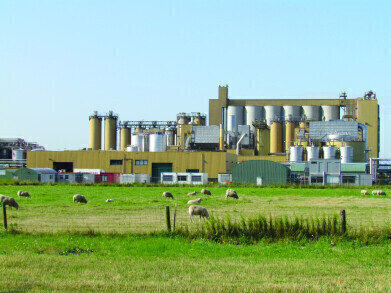Measurement and testing
What is Dew Point?
Oct 10 2023
The term "dew point" often evokes images of early morning grass covered in glistening droplets. But beyond this picturesque scene, the dew point plays an essential role in numerous industries, including the intricate world of petrochemicals. Understanding the dew point and its relevance can help in maintaining the integrity and efficiency of processes within the industry.
At its most essential, the dew point is the temperature at which air becomes saturated with moisture and can no longer hold all the water vapor suspended, leading to the condensation of excess water vapor into liquid water (dew). It's the tipping point when water vapor leaves the gaseous state and becomes a liquid.
So, what role does it play in the petrochemical industry? Firstly, it’s used as a measure to protect the integrity of various aspects of the manufacturing process. Petrochemical plants house a myriad of equipment, including storage tanks, reactors, and distillation columns, all of which can be corroded by moisture, especially if acidic gases are present at the same time. By monitoring and controlling the dew point, the industry can significantly reduce the corrosion rate, enhancing equipment lifespan and safety. It’s the same story with the end-product. For instance, in the production of certain polymers, even minute traces of water can disrupt the reaction, leading to sub-par products. Such considerations are especially relevant in the processing of natural gas, the hydrocarbon dew point is the temperature at which heavy hydrocarbons begin to condense out of the gas mixture. This is crucial for the quality and safety of natural gas transmission. In fact, certain petrochemicals can react with moisture, leading to undesirable reactions or even safety hazards. By keeping the dew point below specific thresholds, the risks associated with these reactions can be minimized.
Secondly, understanding and controlling dew points can lead to more energy-efficient operations. Moist air requires more energy to heat or cool than dry air. By managing the dew point, operations can achieve energy savings.
But how is dew point measured? One common device is the chilled mirror hygrometer, which cools a mirror surface until condensation forms, with the temperature of condensation being the dew point. There are also electronic sensors which work on principles like changes in electrical capacitance or resistance due to moisture presence.
Modern petrochemical plants often utilize real-time dew point monitoring, which aids in proactive decision-making. With shifts in global climates, dew points and humidity patterns may change, and being adaptable to these changes is vital for the industry's resilience.
The dew point is more than just a meteorological term; it's a vital parameter that bridges the gap between efficiency, product quality, and safety in the petrochemical world. With a deeper understanding and control of the dew point, firms are poised to enhance their operations, ensuring that the products fuelling our world are produced in the safest and most efficient manner possible.
Digital Edition
PIN 26.1 Feb/Mar 2025
March 2025
Analytical Instrumentation - Elemental Analysis for Quality and Process Control at Refineries, for Lubricants and Wear Metals in Engine Oils - Synthetic Lubricants: New Developments - Scaling...
View all digital editions
Events
Mar 17 2025 Houston, TX, USA
Mar 18 2025 Beijing, China
Mar 19 2025 Manila, Philippines
Mar 20 2025 Brussels, Belgium
Mar 20 2025 Guangzhou, China


.jpg)



.jpg)



.jpg)








